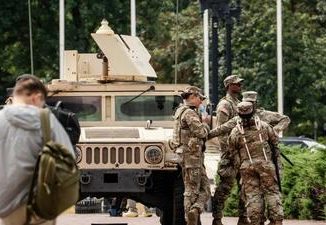
| Published June 28, 2025
In a horrifying act of arson that sent panic through one of Asia’s busiest transit systems, a 67-year-old South Korean man deliberately set fire to a crowded subway train in Seoul during morning rush hour on May 31, 2025. The suspect, reportedly driven by rage over his divorce, calmly ignited gasoline inside the moving train on Line 5, endangering over 160 lives and prompting comparisons to past transit tragedies. The incident has sparked renewed concerns over public safety and emergency preparedness in urban transportation hubs.
What Happened: Timeline of a Planned Inferno on Seoul’s Subway
On the morning of May 31, 2025, during Seoul’s peak commuting hours, an act of domestic terrorism unfolded inside a subway car traveling on Line 5, between Yeouinaru and Mapo stations—part of a tunnel that runs under the Han River. At approximately 8:42 a.m., the suspect, a 67-year-old man surnamed Won, boarded the train with a concealed container of gasoline and a plan to ignite it mid-journey, trapping passengers underground.
Shortly after the train entered the tunnel—a moment when escape would be most difficult—Won stood up from his seat, removed the gasoline container from his bag, and began pouring fuel across the floor of the carriage. As stunned passengers began to notice the strong smell and unusual behavior, Won took a piece of his clothing, soaked it in the gasoline, and used it as a makeshift torch. In seconds, flames erupted, and a column of dense black smoke rapidly engulfed the train car.
Panic spread immediately. Some passengers tried to douse the flames with their clothing, water bottles, or fire extinguishers onboard. Others raced toward the end of the carriage, covering their mouths and helping children and elderly passengers to safety. As the smoke triggered the train’s fire alarm and emergency systems, the conductor made a critical decision to bring the train to a stop and initiated emergency evacuation protocols.
First responders arrived within minutes. Seoul Metro’s emergency teams used fire extinguishers and breathing equipment to enter the tunnel, assist passengers, and contain the blaze. Miraculously, despite the confined space and thick smoke, no deaths were reported.
The suspect was quickly subdued and detained at the scene by responding officers. He offered no resistance and reportedly admitted that he had planned the attack as a form of protest linked to his anger and despair over his divorce. Authorities later found evidence at his residence, including notes, fuel containers, and materials suggesting premeditation.
The Impact: Terror in Transit and Public Outcry
The attack sent shockwaves throughout South Korea and beyond, highlighting both the vulnerability of public transit systems and the lasting trauma such events can inflict on civilians. More than 160 passengers were aboard the affected train, many of them commuters heading to work or school. Although no fatalities were reported, the psychological and physical toll was substantial.
At least six passengers suffered burn injuries, and 23—including the suspect himself—were hospitalized for smoke inhalation. Another 129 people received on-site treatment for panic attacks, respiratory distress, and minor injuries sustained during the chaotic evacuation. Eyewitnesses described the scene as “hellish,” with thick smoke choking the cabin, alarms blaring, and people frantically trying to find the emergency exits in near-zero visibility.
The sheer terror experienced in those moments has left many passengers with symptoms of post-traumatic stress. Seoul authorities have since offered counseling services and trauma support, especially for children and elderly victims who were onboard.
In terms of property damage, the fire destroyed part of the subway car’s interior, including its flooring, seats, and air ventilation system. The financial loss was estimated at over 330 million Korean won (approximately $242,000 USD). Subway operations along Line 5 were temporarily suspended, causing ripple effects throughout Seoul’s transit network, one of the busiest in the world.
The incident also ignited a national conversation on subway safety, prompting calls for tighter surveillance, stricter passenger screening, and more accessible fire suppression tools inside trains. Authorities emphasized that safety protocols enacted after past tragedies—such as the 2003 Daegu subway fire that killed 192 people—likely prevented this attack from becoming far deadlier.
 Resulting Effects: Public Alarm, Legal Action, and Policy Shifts
Resulting Effects: Public Alarm, Legal Action, and Policy Shifts
The subway arson attack had immediate and far-reaching consequences—socially, legally, and politically—shaking public confidence in the safety of South Korea’s mass transit system and prompting renewed scrutiny of emergency preparedness.
🔹 Legal Repercussions
Prosecutors swiftly charged the suspect, Mr. Won, with attempted murder, arson of a moving vehicle, and violations of national railway safety laws. Authorities emphasized that his deliberate choice of timing and location—during peak hours in an underwater tunnel—made the act comparable to terrorism. Psychological evaluations found no evidence of psychopathy, strengthening the case for full legal responsibility.
🔹 Transit System Fallout
Seoul Metro faced immediate backlash and pressure to review safety protocols, even though staff and passengers were praised for their quick response. Transit authorities began assessing:
-
Emergency communication systems
-
Fire containment capabilities in carriages
-
Passenger access to fire extinguishers and oxygen masks
Some called for random bag checks and enhanced surveillance, igniting a national debate over security vs. privacy in public spaces.
🔹 Public Trauma and Mental Health Concerns
Although no lives were lost, the emotional scars ran deep. Dozens of passengers reported nightmares, anxiety, and claustrophobia following the incident. Trauma counselors were dispatched to assist victims, and several NGOs stepped in to provide ongoing mental health support—particularly for children and elderly passengers who were trapped inside the smoke-filled train.
🔹 National Discussion
The attack triggered widespread discussion on social isolation and untreated mental health issues among elderly individuals, especially men facing financial or familial collapse. Some lawmakers proposed early intervention programs and counseling hotlines targeting high-risk demographics.
In short, while the fire was extinguished within minutes, the event ignited lasting consequences across South Korean society—legally, socially, and psychologically.
 Bottom Line: A Wake-Up Call for Transit Safety and Mental Health Awareness
Bottom Line: A Wake-Up Call for Transit Safety and Mental Health Awareness
The shocking arson attack on Seoul’s Line 5 subway was not just a criminal act—it was a chilling reminder of how personal grievances can escalate into public danger when left unchecked. While the swift actions of passengers and transit staff prevented mass casualties, the incident exposed lingering vulnerabilities in public transportation security and underscored the urgent need for mental health outreach, especially among isolated or distressed individuals.
As legal proceedings move forward, the nation is left grappling with the emotional aftermath and policy implications. The fire may be out, but its smoke lingers in the form of fear, trauma, and a renewed demand for vigilance.





Be the first to comment